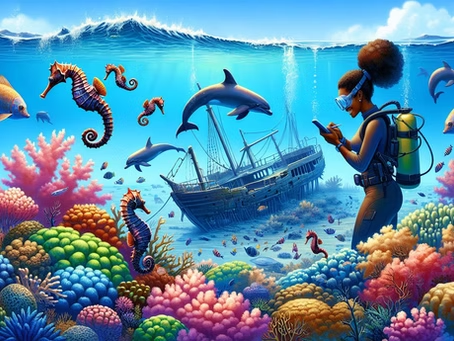Introduction
Marine conservation efforts worldwide have produced inspiring success stories that showcase the strength of collaboration, innovation, and determination in safeguarding our oceans. These achievements not only highlight victories in protecting biodiversity but also serve as guiding examples for future initiatives. From grassroots action to global cooperation, each success story provides valuable lessons on how humanity can restore marine life and ecosystems for generations to come.
The Power of People: Community-Driven Marine Conservation
Grassroots Movements Sparking Change
Local initiatives have proven pivotal in driving marine conservation. Citizen science projects, such as reef monitoring and beach cleanups, demonstrate how small-scale actions ripple into global impact. Grassroots efforts are crucial because they:
- Mobilize communities to engage in conservation activities
- Bridge the gap between research and public understanding
- Empower individuals to advocate for marine protection
Local Heroes: Stories of Individual Impact
Some of the most profound changes begin with individuals. Whether it’s a teacher protecting wetlands or activists advocating for marine reserves, their efforts ignite broader community action. These stories show that individual dedication can spark community-wide transformations.
The Ripple Effect of Community Involvement
When communities rally for conservation, they create a precedent for future generations. Collective efforts often lead to innovative, ecosystem-specific solutions such as establishing local marine protected areas or partnering with scientists for data collection. By taking ownership, communities become champions of marine stewardship.
The Science of Survival: Research Fueling Marine Protection
Breakthrough Studies Shaping Policy
Scientific research drives policy and international collaboration. Initiatives like the Pew Bertarelli Ocean Legacy project exemplify how studies influence global action, from preventing ocean plastics to protecting coastal wetlands.
Data-Driven Decisions in Habitat Restoration
Restoration efforts rely on systems thinking and scenario planning to address climate challenges. Even under uncertainty, resilience-focused strategies allow continuous monitoring and adaptation, ensuring sustainability.
The Role of Technology in Monitoring Marine Health
Innovations such as satellites, drones, and IoT sensors provide critical insights into species, habitats, and ecosystem changes. These tools empower conservationists to act swiftly and responsibly.
Turning the Tide: Notable Species Making a Comeback
The Humpback Whale’s Remarkable Recovery
Once near extinction, humpback whales have rebounded thanks to international protections, marine sanctuaries, and global awareness campaigns.
Oyster Reefs: A Story of Resilience
Through restoration projects and sustainable harvesting, oyster reefs are returning as vital ecosystems that filter water, protect coastlines, and support local economies.
Fish Population Restoration
Collaborations among governments, scientists, and fishers have revived depleted populations, proving that sustainable harvesting and marine protected areas can restore ecosystems while sustaining livelihoods.
Global Guardians: International Marine Reserves
The Great Barrier Reef
This iconic ecosystem demonstrates how strict regulations, co-management, and enforcement restore biodiversity while supporting sustainable tourism and fisheries.
The Galapagos Marine Reserve
Known as a living laboratory, the Galapagos showcases how strict protections preserve biodiversity hotspots while fostering scientific discovery.
Cross-Border Conservation
Collaboration across nations ensures the shared management of resources, joint monitoring, and unified responses to threats such as pollution and overfishing.
Tech to the Rescue: Innovations in Marine Conservation
Artificial Reefs and Habitat Engineering
Engineered reefs provide habitats for marine species and stimulate coral growth, benefiting biodiversity and eco-tourism alike.
Aquaculture Advances
Sustainable aquaculture innovations, such as smart fishing gear and biotechnology, reduce ecological damage and enhance marine resilience.
Conservation Tech
Tools like AI models predicting bleaching events and drones monitoring species enable proactive, data-informed marine management.
Citizen Science: Empowering Public Participation
Citizen science transforms individuals into active contributors. Mobile apps and local initiatives allow the public to track pollution, monitor reefs, and influence conservation policy. These efforts bridge science and society, amplifying conservation impact.
Collaborative Conservation: Academia Meets Action
When academic research merges with grassroots conservation, results are transformative. Marine spatial planning, coral genetic research, and long-term ecological studies showcase how science and practice together achieve lasting results.
Local Legacies: Balancing Conservation with Community Rights
Sustainable conservation requires respecting community rights and cultural heritage. Co-management, equitable benefit-sharing, and recognition of traditional practices ensure that conservation uplifts local livelihoods while protecting biodiversity.
Conclusion
The global triumphs of marine conservation reveal that resilience, innovation, and collaboration can restore the oceans. From whales to oyster reefs, and from local heroes to global reserves, these stories inspire future generations to continue protecting marine ecosystems. By learning from these successes, we can chart a sustainable path forward and ensure oceans thrive for centuries to come.
FAQ
What are examples of community-driven conservation success?
Grassroots efforts, such as reef restoration and traditional fishing preservation, have revived ecosystems sustainably.
How has science contributed to marine protection?
Research has shaped policies, guided restoration, and enabled technology-driven monitoring of ocean health.
Which species showcase conservation success?
The humpback whale has recovered significantly due to international protections and conservation campaigns.
What role do international marine reserves play?
Reserves like the Great Barrier Reef and Galapagos safeguard biodiversity and support global cooperation.
How does technology aid conservation?
Artificial reefs, aquaculture innovations, and AI tools protect habitats and predict ecological risks.
What is citizen science in marine conservation?
Public-led projects collect data, clean coasts, and advocate for stronger marine protections worldwide.
Can you share examples of conservation technology?
Projects like reef engineering and microplastic filtration have restored marine ecosystems and improved resilience.
Why is academia important in conservation?
Research combined with field practice generates holistic, sustainable strategies for marine ecosystem protection.

